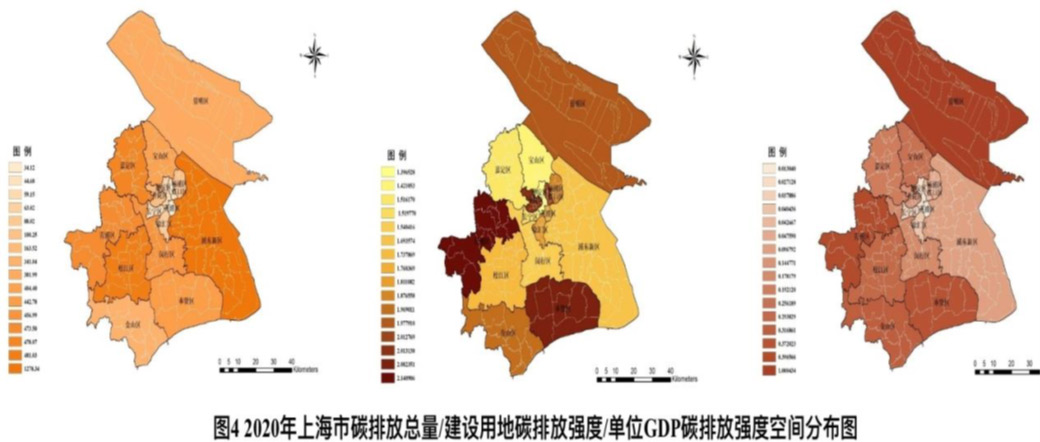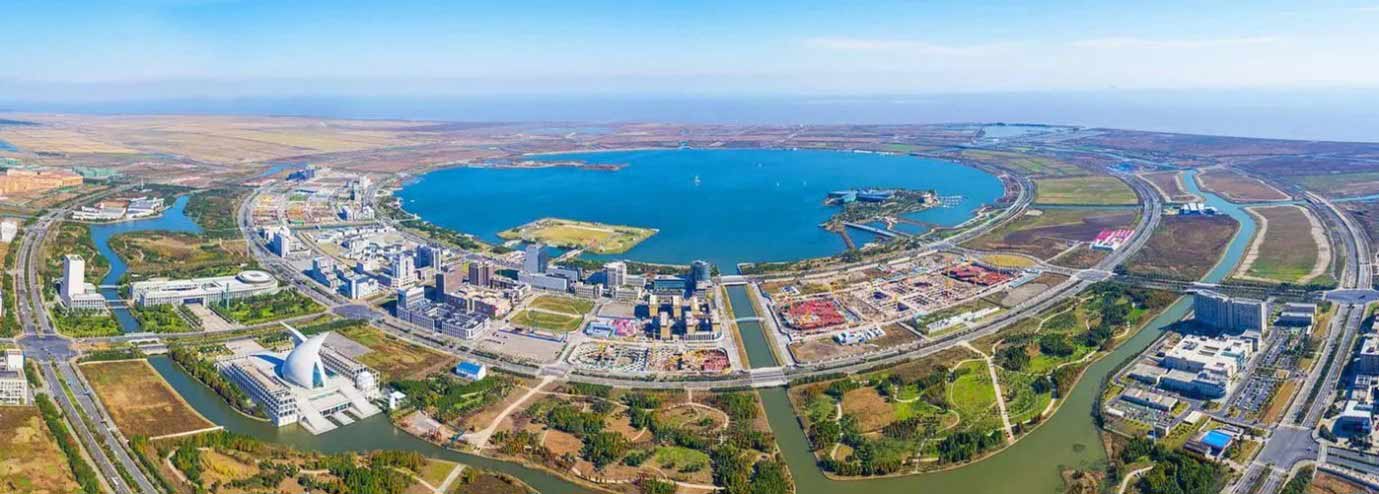5th Singapore Shanghai Dialogue on Urban Governance

3 Nov 2023

10.00 am – 12.00 pm.

MND Level 23 Function Room, MND Building, 5 Maxwell Road, Singapore 069110
This is an exclusive by-invitation-only closed door dialogue.
Resources
Lecture Poster (PDF: 247 KB)
Lecture Photos
Synopsis
Charting Low Carbon, Eco-Oriented Urban Development in Shanghai
Through planning policies, research and case studies in Shanghai, this lecture aims to share about the influence of China’s commitment to peak its emissions by 2030 and achieve carbon neutrality by 2060 on future urban development in Chinese cities. Experts from Shanghai Tongji University and Municipal Commission of Housing, Urban Rural Development and Management will discuss how the vision of an “ecological city” in Shanghai’s 2035 Masterplan is being translated into planning strategies for urban renewal and green building and construction policies for new townships, supported by appropriate policy indicators developed through research and benchmarking with global cities to enable well-coordinated transition to meet its carbon-peaking goals.
The lecture presentations will be conducted primarily in Mandarin, with simultaneous interpretation in English.
Lecture Report
5th Shanghai – Shanghai High Level Dialogue
CLC and the Shanghai Municipal Commission of Housing, Urban-Rural Development and Management (MCHURDM) jointly organised the 5th edition of the Singapore-Shanghai Dialogue on 3 November 2023. Held in Singapore for the first time, the Dialogue is under the ambit of the Singapore Shanghai Comprehensive Cooperation Council (SSCCC).
CLC’s Executive Director Hugh Lim and Deputy Director-General of MCHURDM Zhang Zheng both emphasised the importance of cities leading global climate actions in their Dialogue’s opening addresses. Both Singapore and Shanghai are urban regional hubs with a high population density and have industries forming the back-bone of our economic development. Therefore, both cities will benefit from a well-coordinated approach in planning and developing infrastructure and built assets with lower carbon footprints. Likewise, the public and private sectors, as well as community and individuals, would all play key roles to seize new opportunities in the green transition towards a low carbon future.
Professor Zhu Dajian of Tongji University and Associate Counsellor Chen Ning of MCHURDM shared about the emerging framework, policies and planning approaches towards decarbonising mega-cities like Shanghai through concerted planning policies and targets.
From planning for sustainability to planning towards net-zero
Professor Zhu Dajian, Director of Institute for Sustainable Development and Governance in the Tongji University, a policy advisor and key expert of Shanghai 2035 Masterplan, shared his views on how Chinese cities must pivot their planning towards net-zero using Shanghai as an example.
Over the years, China has successfully integrated the planning functions under the Ministry of Natural Resources, to coordinate built up space, ecological space and agricultural space both nation-wide and in cities. Prof Zhu shared that there were already “red-line” policies in place to prevent excessive urban sprawl, and the emerging thinking was to re-balance space distribution in cities based on categorisation of carbon source and carbon sink spaces in the planning, inspired by the circular economy principles. In the Shanghai 2035 Masterplan, an urban boundary was stipulated to be within 2,800 square kilometers, in order for the municipality to ringfence 2,433 square kilometers of ecological space, and 1,200 square kilometers of agriculture space. Within the allowed urban boundary, 5 new townships were to be developed on the outskirts of Shanghai, which must be compact, green and multifunctional.
Prof Zhu further elaborated that when compared to various sectoral performance targets that were production efficiency-focused, spatial control emphasised overall effectiveness by imposing consumption limits through allocated land resources. These will nudge industries to improve their competitiveness in terms of carbon productivity (GDP output per ton carbon emissions) and enhance liveability of citizens within the projected limit of emissions per capita. As a developing nation, Chinese cities could not rely on carbon trading to offset their residual emissions. Therefore, Shanghai is striving to set an example to prioritise local carbon offset/removal with ecological and agricultural spaces to offset 5-10% of its peak carbon emissions (10-20 million tons), towards overall carbon neutrality by 2060.

Caption: Research on Shanghai’s Carbon Emissions and Intensity Distribution
Championing eco-centric development in cities and built environment
Associate Councillor Chen Ning emphasised that in China, it was of paramount importance for building policies to look at the lifecycle emissions across the value chain, including upstream cement/steel manufacturing, which accounted for almost half of its national emissions.
Shanghai had achieved good progress on energy efficiency with 13 million square meters of Super Low Energy Buildings (36% of national total GFA), and was a first-mover among Chinese cities on the percentage of pre-fabricated buildings in new developments. Additionally, various pilot projects were being carried out on adaptive reuse of old residential and commercial buildings, and real-time carbon emissions monitoring system of neighbourhoods and industrial areas.
Moving forward, Shanghai MCHURDM will further adapt the green building guidelines and technical standards based on carbon reduction goals, impose tighter regulatory limits on operational energy consumption for public buildings, and lead innovation and piloting of low embodied carbon construction material.

Caption: 4.2 million sqm super low energy buildings developed in 43 square kilometers LinGang Pilot Super Low Energy Building District
About the Speakers
SPEAKER
Zhang Zheng
Deputy Director-General
Shanghai Municipal Commission of Housing,
Urban-Rural Development and Management
(MCHURDM)
Within Shanghai MCHURDM, Mr Zhang oversees urban governance, emergency response, disaster management and international collaboration.

SPEAKER
Professor Zhu Dajian
Professor in the School of Economics and
Management of Shanghai Tongji University,
Director of the Institute of Sustainable
Development and Governance,
Vice Director of Tongji Academic Committee
Professor Zhu is a member of the Social Science Commission under the jurisdiction of the Chinese Education Ministry, and of the Experts Commission on Sustainable Development & Resource and Environment under the jurisdiction of the Chinese Construction Ministry, a special policy advisor for Shanghai Municipal Government, and an expert for the Shanghai Urban Planning Commission.
Professor Zhu is also appointed as a member of CLC’s inaugural Urban Resilience Knowledge Council for 2023/24.
As an academic leader and planning advisor, Prof Zhu will share about China’s latest development of its “1+N” policy framework for the carbon-peaking and carbon neutrality, and how cities like Shanghai must lead a more comprehensive spatial planning strategy in accordance with the national policies to enable well-coordinated decarbonisation of energy, industry, building and transport sectors, and to offset the residual emissions through carbon sequestration and carbon market.

SPEAKER
Chen Ning
Professor in the School of Economics and
Management of Shanghai Tongji University,
Director of the Institute of Sustainable
Development and Governance,
Vice Director of Tongji Academic Committee
Mr Chen has led policies of green building, energy efficiency, building material and circularity policies and research in Shanghai. He has been a key figure in the formulation of “Carbon Emissions Peaking Action Plan for Shanghai’s Urban Rural Development”, “Shanghai’s 14th Five-Year Plan for Green Buildings”, “Shanghai’s Building Pre-fabrication Development Plan 2016-2020”, “Shanghai’s Super Low Energy Building Action Plan 2023-2025”.
Mr Chen will share about Shanghai’s context and characteristics of its carbon emissions, in particular the built environment emissions compared to similar mega-cities. The vision of low carbon and ecological development is being translated into concrete policy targets and action plans, including green building and energy efficiency in new townships; retrofit and adaptive reuse in existing urban areas, and integration of renewable energy within built environment at scale.
← Previous Lecture | Next Lecture →